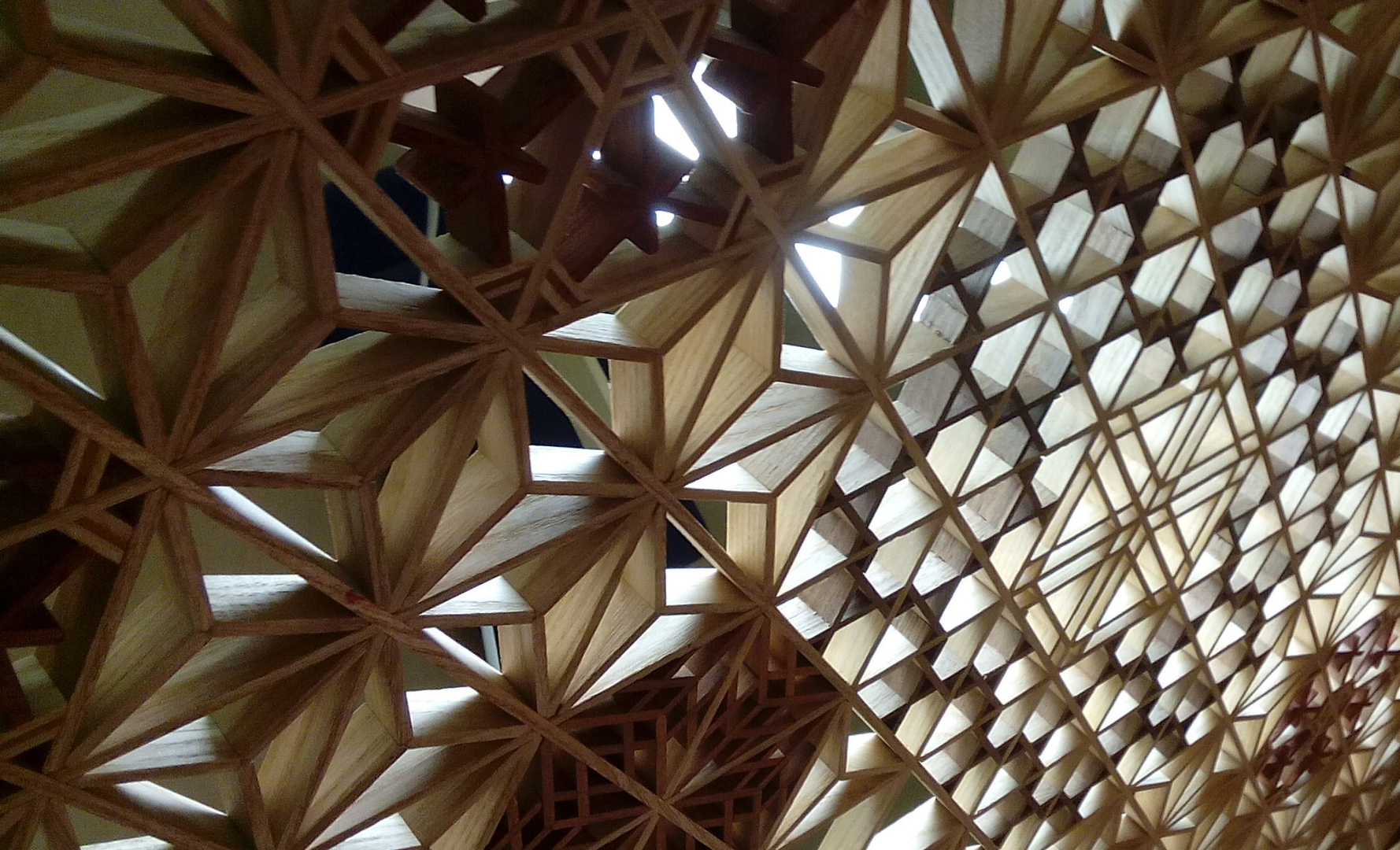Kumiko (woodworking) on:
[Wikipedia]
[Google]
[Amazon]
 ( ja, ) is a Japanese technique of assembling wooden pieces without the use of nails.
( ja, ) is a Japanese technique of assembling wooden pieces without the use of nails.
 ( ja, ) is a Japanese technique of assembling wooden pieces without the use of nails.
( ja, ) is a Japanese technique of assembling wooden pieces without the use of nails.
Method
Thinly slit wooden pieces are grooved, punched and mortised, and then fitted individually using a plane, saw, chisel and other tools to make fine adjustments. The technique was developed in Japan in the Asuka Era (600–700 AD). panels slot together and remain in place through pressure alone, and that pressure is achieved through meticulously calculating, cutting, and arranging interweaving joints. The end result is a complex pattern that is used primarily in the creation of shoji doors and screens. Traditionally, the wood of choice was thehinoki cypress
''Chamaecyparis obtusa'' (Japanese cypress, hinoki cypress or hinoki; ja, 檜 or , ) is a species of cypress native to central Japan in East Asia, and widely cultivated in the temperate northern hemisphere for its high-quality timber and orna ...
.
Patterns
The designs for pieces aren't chosen randomly. Many of the nearly 200 patterns used today have been around since theEdo era
The or is the period between 1603 and 1867 in the history of Japan, when Japan was under the rule of the Tokugawa shogunate and the country's 300 regional '' daimyo''. Emerging from the chaos of the Sengoku period, the Edo period was characteri ...
(1603–1868). Each design has a meaning or is mimicking a pattern in nature that is thought to be a good omen. The patterns are designed to look good, but also to distribute light and wind in a calming and beautiful way.
See also
*Reference
{{Japanese architectural elements Japanese woodwork Woodworking techniques